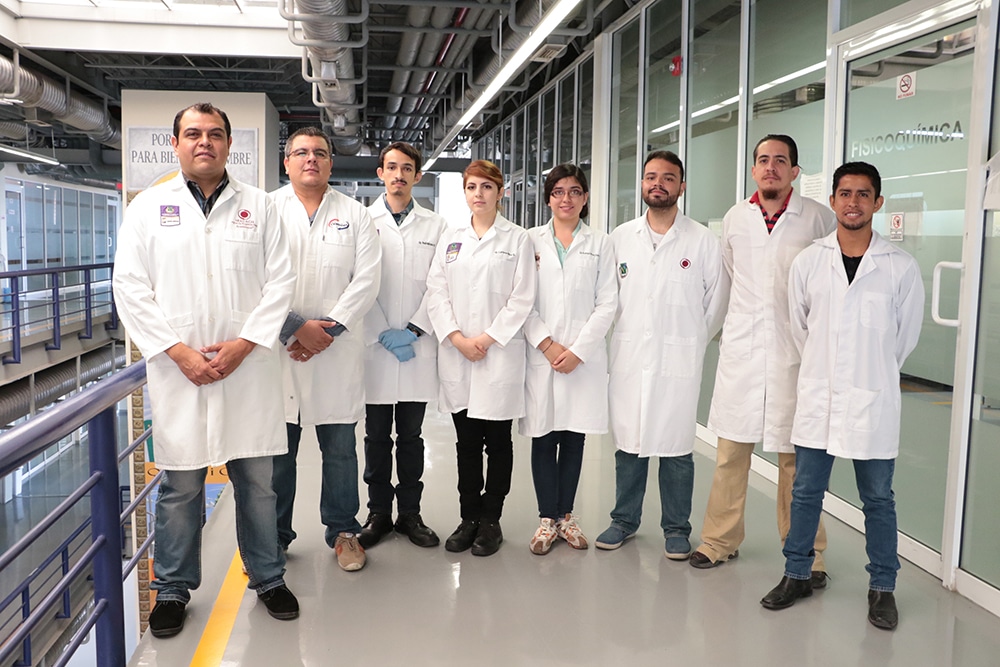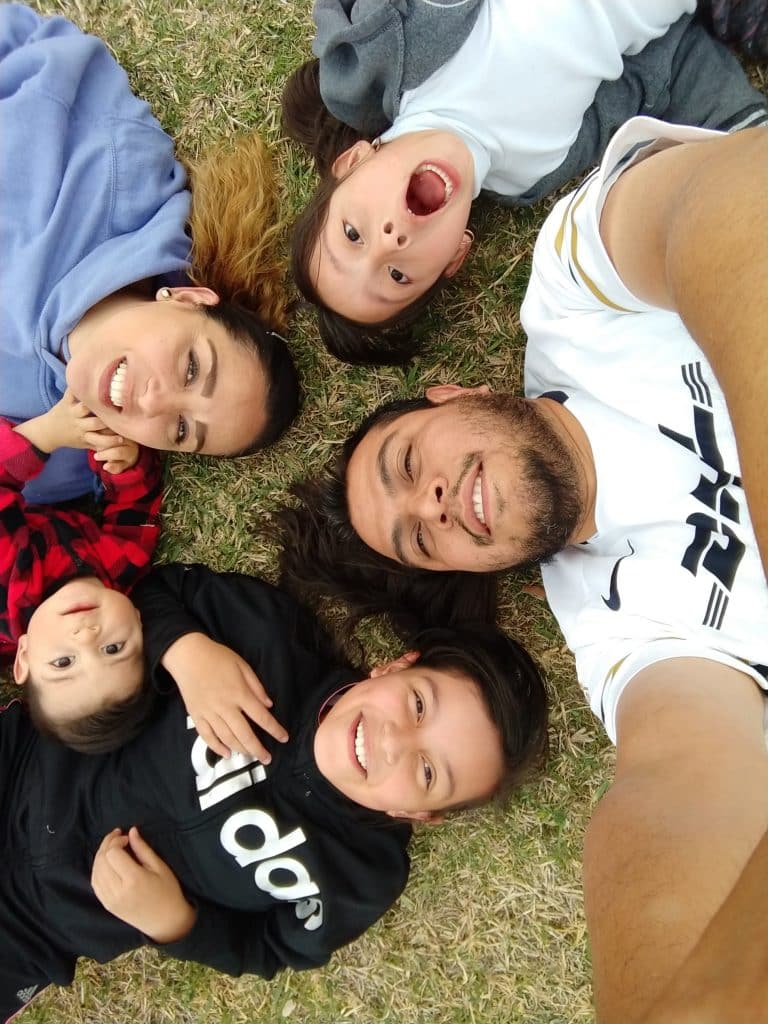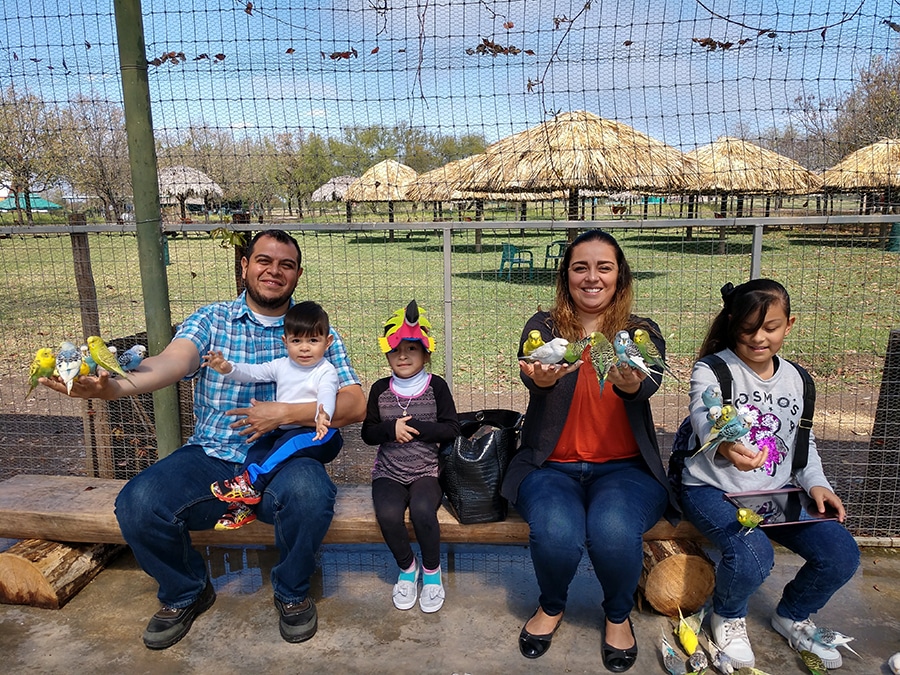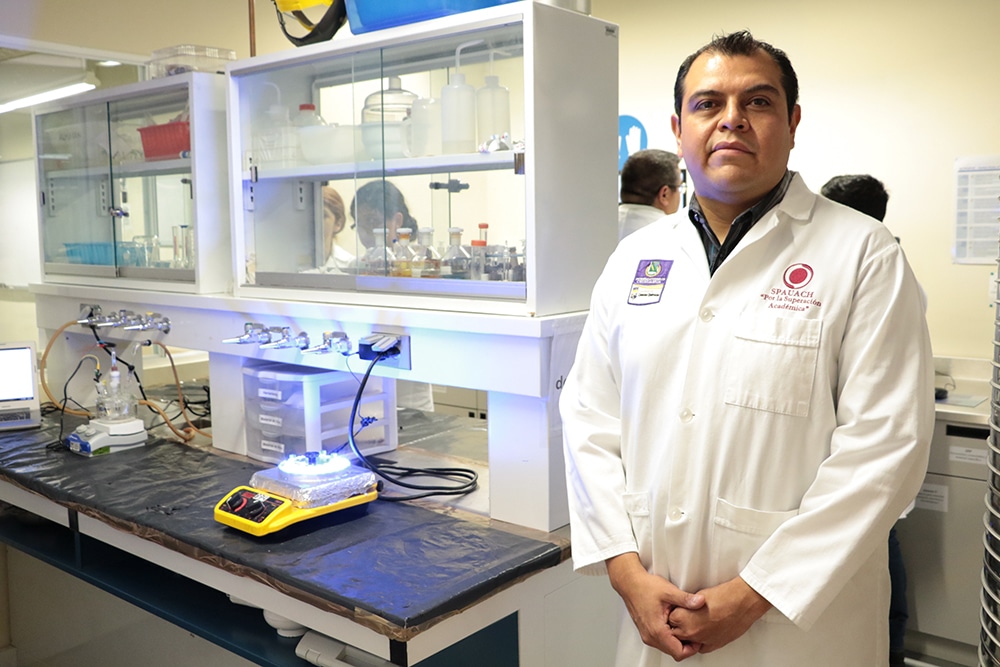Victor Ramos Sanchez came from a “culture of effort”—a family history spanning different Mexican cultures that led him to appreciate what he had, strive for more and help lift others to similar opportunities. The associate professor in the Department of Chemistry and Biochemistry talked to The NAU Review about how he got started on research at 9 years old and how his research is contributing to a sustainable circular economy.
What brought you to NAU?
I was already a tenured professor at my former university but actively sought professional growth and a professional challenge abroad. When I saw the advertised academic position at NAU, I researched the university. I was surprised that the Department of Chemistry and Biochemistry had a solid contribution to research by strong female academic leaders—a robust, empowering message I would like to pass on to my two daughters. Then, on my campus interview, I had excellent feelings. I felt a fantastic work environment and genuine and legitimate leader’s directive for diversity, equity and inclusion. Since coming here, I have felt welcomed by students and peers.

I have been designing and implementing sustainable materials and processes for hydrogen production and fuel cells for the past 20-ish years. I have heavily focused my efforts on solar hydrogen production. I advocate the “waste/pollutant to power” concept by valorizing waste or pollutants, encouraging a sustainable circular economy. I am an early adopter of alternative approaches promoting green analytical principles, such as Total Reflection X-Ray Fluorescence (TXRF).
Let me give an example of my previous but recent research in simple terms. Several industries emit flue gases to the environment. These industries control these pollutant emissions by implementing gas scrubbers. This approach only transfers the pollutant from a gaseous stream to an aqueous stream. Our study proposed a photochemical step to treat aqueous streams resulting from sulfur dioxide emissions to obtain ammonium sulfate, a fertilizer and hydrogen, the ultimate energy vector.
What are you working on now?
The Ramos Research Lab is just initiating experimental work this semester. Our mission is to train, coach and mentor future chemists who will design and implement materials and processes for renewable energy production and pollution mitigation guided by the 12 principles of green chemistry and driven by creativity, innovation and sustainable thinking in an inclusive and diverse environment.
Based on the current extended B.S. in chemistry, forensic chemistry and criminalistics emphasis offered by my department and my current academic appointment in analytical chemistry and to adapt to our current and prospected research facilities at NAU, my students will be dealing with arsenic quantification in cannabis by TXRF, assessment of microplastics in indoor air, Raman spectroscopic studies for detection of fentanyl and electrosynthesis of urea. In addition, we are actively looking for funding for biomassderived supercapacitors and solar production of hydrogen by thermochemical cycles. So, if faculty peers are interested in collaboration, please do not hesitate to contact me.
How has your heritage and background shaped your career?
I was born and raised within a culture of effort. If I wanted a game console, a computer or a bicycle, I had to work and persevere to gain it. When I was a kid, during weekends, I used to work in a supermarket packing and carrying groceries for customers for a tip. Luckily, at home, we always had food on our table, but that is not the case for all families in Mexico. This experience that my dad set for me, where I had the chance to share with other less privileged kids, was powerful. That served me to value what I had. I guess that is what my father wanted since he was a poor peasant from northern Veracruz who emigrated to Mexico City when he was only 12 years old and suffered a lot. So, that makes me a very proud Mexican who feels honored to have a mix of Indigenous blood from two different regions of my country but lived all his life in Chihuahua, in northern Mexico. So, I am the result of a vibrant heritage and culture from Veracruz, Mexico City and Chihuahua; therefore, I recognize my country’s rich culture and heritage.
During the first steps of my academic career, I had the privilege to teach in higher education in Chiapas, in the southeast of Mexico. I feel very proud that I could give back to my country after my free public education and the scholarship I obtained that allowed me to get my Ph.D. in Sheffield, UK. All this got me working to increase the participation of the underrepresented in chemical sciences by involving minority undergraduate and graduate students in my laboratory for the past 14 years.

When I was a 9-year-old kid attending fourth grade, I was part of an initiative to accompany what authorities called “gifted” kids. We were a group of fewer than 10 kids and had learning activities in a separate classroom twice weekly. I remember that we were producing the school newspaper among our tasks. In this group, I had my first exposure to research. Back then, I was passionate about unidentified flying objects, aka UFOs. I remember I did my first formal literature review. I had my cards with bibliographic information. I was in the public library reading newspapers and books with stories about UFOs. I felt great when I formally presented my findings in front of an audience of adults in a government auditorium. Despite recent congressional hearings, I am not into UFOs anymore. However, I still enjoy the whole research process, from literature review to publishing and presenting to peers and obviously including all the experimental work in the lab.
What did you want to be when you grew up?
Honestly, I was very flexible on that kind of thought. I don’t remember a particular profession or a job I was really in love with. However, if I could say of a persistent dream, I wanted to be a professional goalkeeper. I deeply admired Jorge Campos, the goalkeeper of the Mexican soccer team.
What have you been most proud of recently?
Indeed, I am very proud of my family. We have had difficult times since the pandemic. I am amazed at how resilient my kids Melanie (15), Samantha (10) and Caleb (7) have been living and attending schools on both sides of the border during the past four years, either receiving in-person or remote instruction, I see their progress as individuals. Now they are attending new schools in a completely new city for them. In this endeavor, I have an extraordinary accomplice, my wife, Rosalia, who is always willing to take risks with me.
What is your favorite way to spend a day off?
If the weather and stamina allow, city sightseeing with the family is excellent. We used to go to the zoo or SeaWorld. However, sometimes the cold weather calls for a whole day watching football, movies or cartoons with the family while eating snacks, hot drinks or whatever comfort food or drink we feel like.
What are three things on your bucket list?
- To get married (in the Church).
- To see my three kids as happy adults contributing positively to society.
- To witness the actual hydrogen economy, with a society migrating from fossil fuels.




